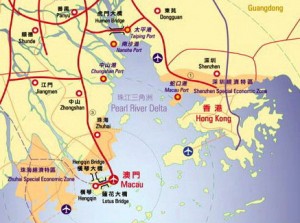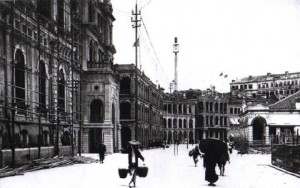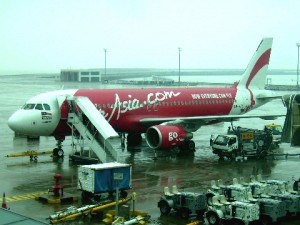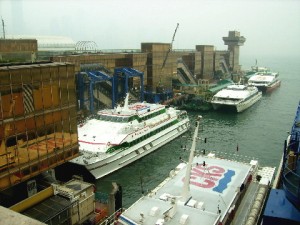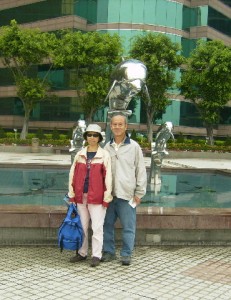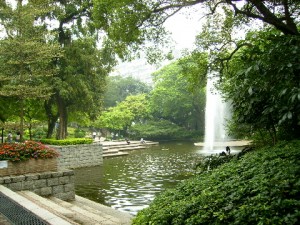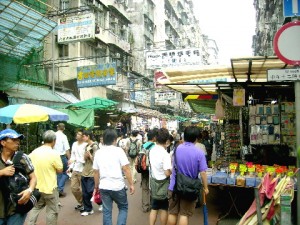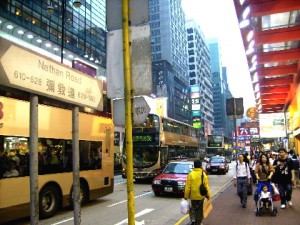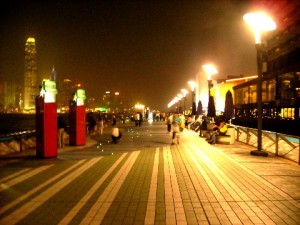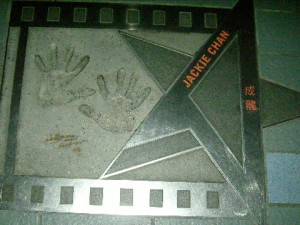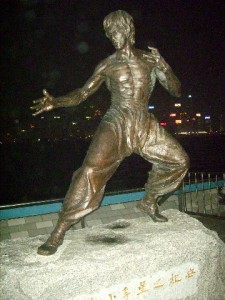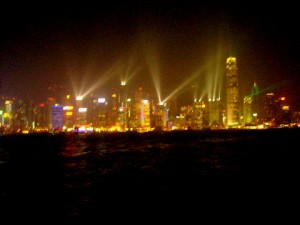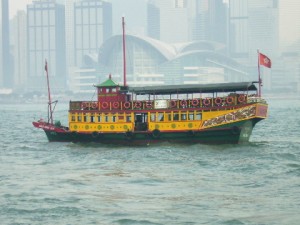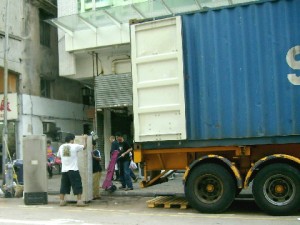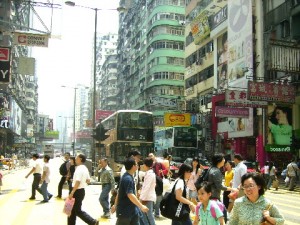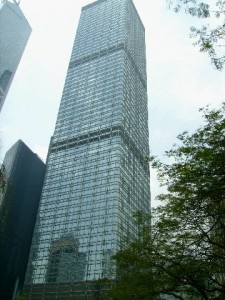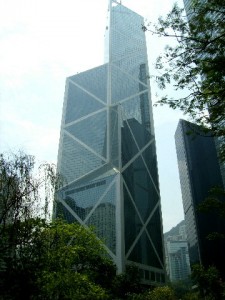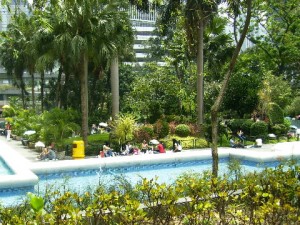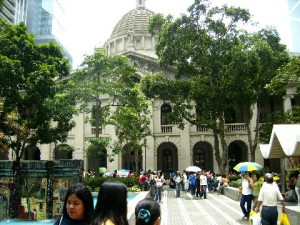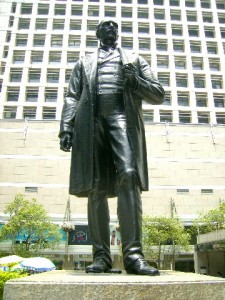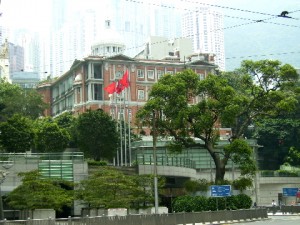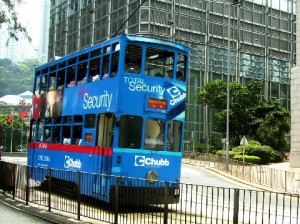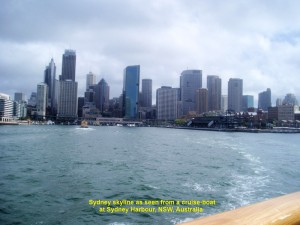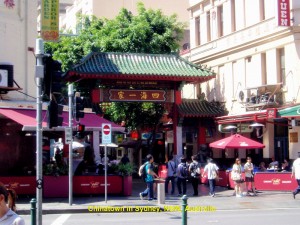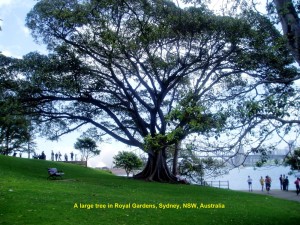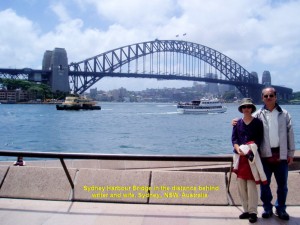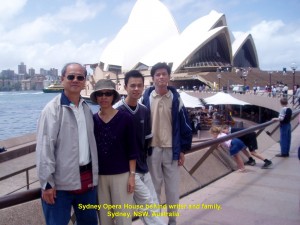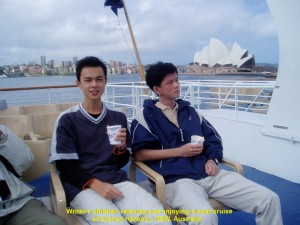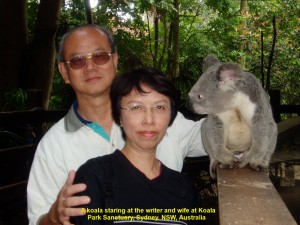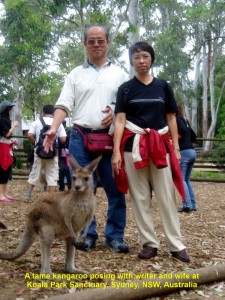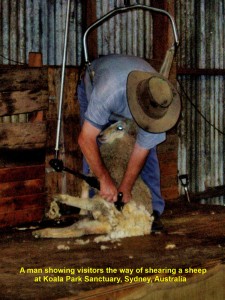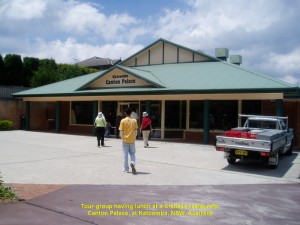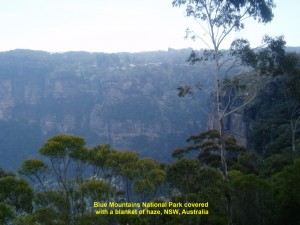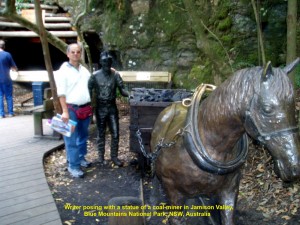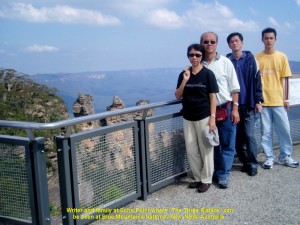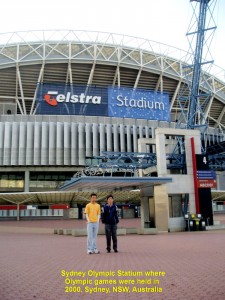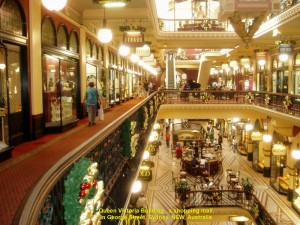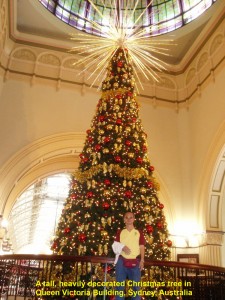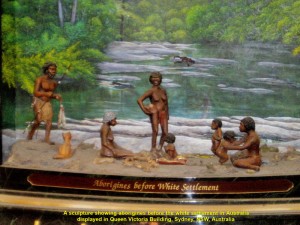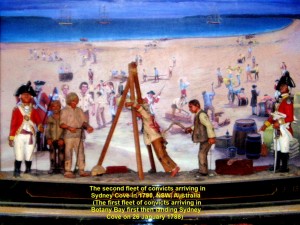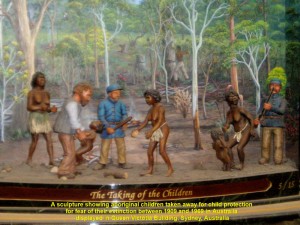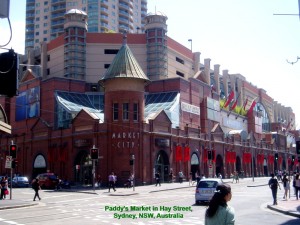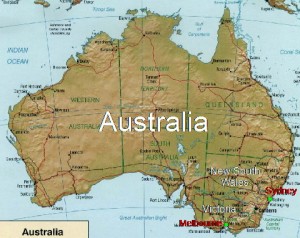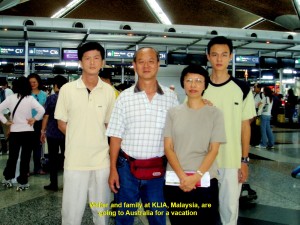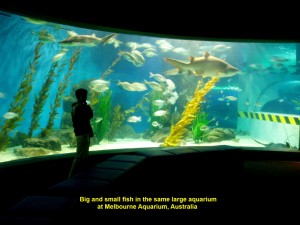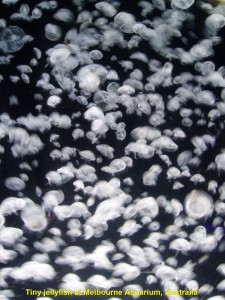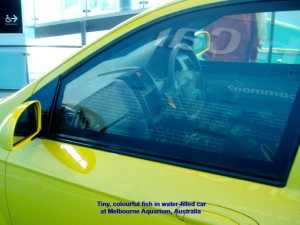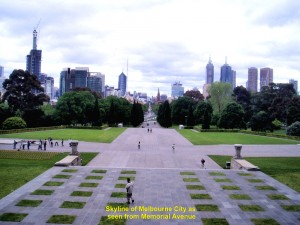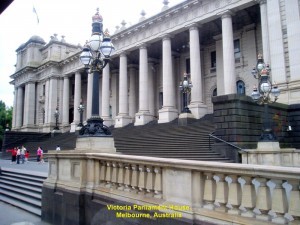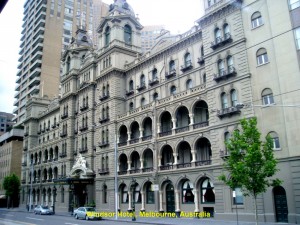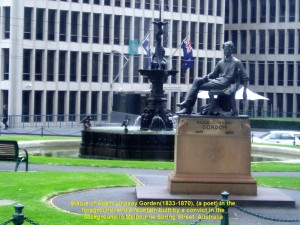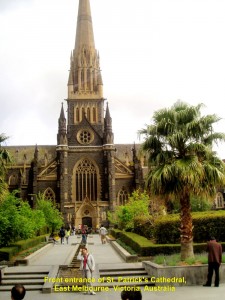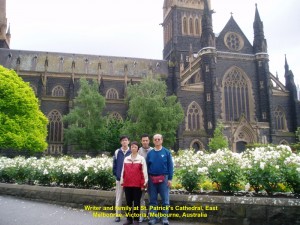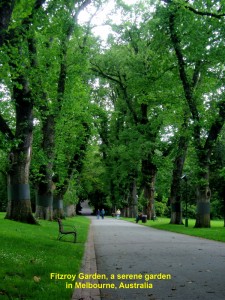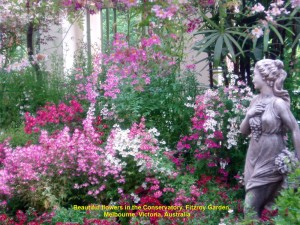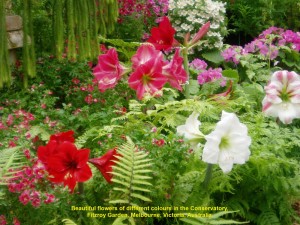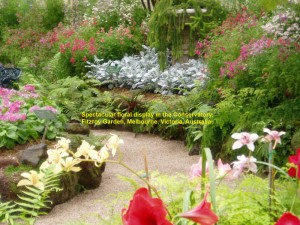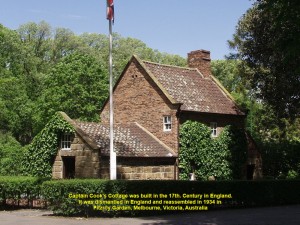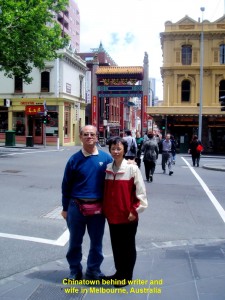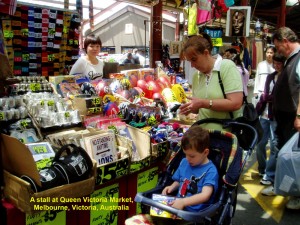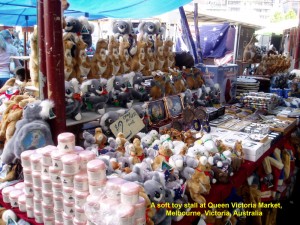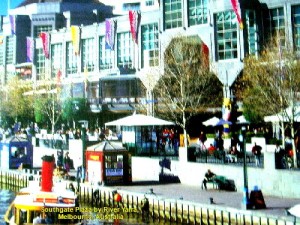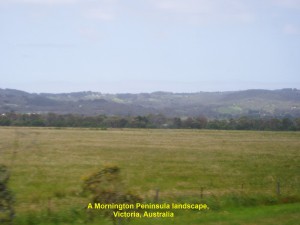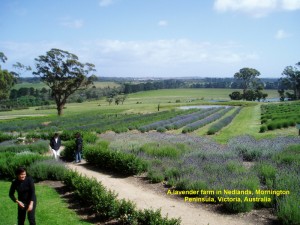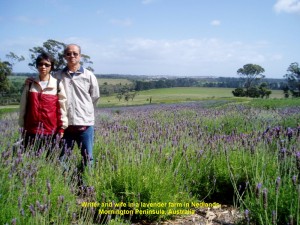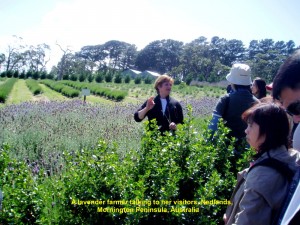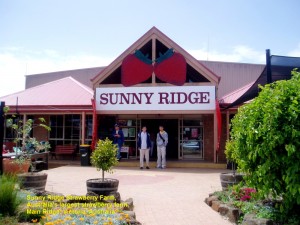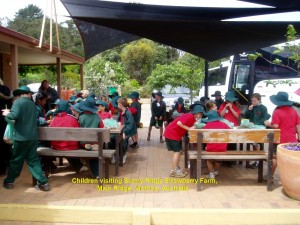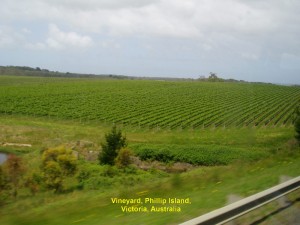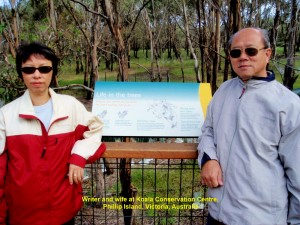Hong Kong Travel (Part I)
Hong Kong is a well-known territory in the world. Located in the south-eastern part of China, it consists of Kowloon, the New Territories, Hong Kong Island, Lantau Island and over 260 small islands in the South China Sea. It has a total area of 1,104 sq. km. and a population of about 7 millions: 90 % of them is Chinese. Most of them are live in Kowloon and the northern part of Hong Kong Island. Hong Kong Island is considered as the most densely-populated island in the world. “Hong Kong” in Chinese means “Fragrant Harbour” as it was once a busy port where fragrant wood products and incense were actively traded. It is separated by a narrow stretch of water known as Victoria Harbour from Kowloon, but it is now connected by three underwater tunnels, viz. Cross-Harbour Crossing, Eastern Harbour Crossing and Western Harbour Crossing.
Historical Facts on Hong Kong: In 1841, Great Britain seized Hong Kong Island from China. A year
later, China ceded Hong Kong Island to Great Britain under the Treaty of Nanking. In 1860 China ceded Kowloon and Stonecutter to the latter again. In 1898, China granted 99-year lease on New Territories, Lantau Island and other islands to Great Britain.
In 1997, Great Britain returned Hong Kong to China, after ruling it for over 150 years. Since 1997, Hong Kong has become a China’s Special Administrative Region (SAR), operating under the “one country, two systems” principle. It means that it enjoys a high degree of autonomy in all affairs except foreign and defence for at least 50 years.
A Vibrant City Hong Kong is a vibrant city and a well-known financial and banking centre in the world. Besides, it is a famous tourists’ destination which offers lots of attractions ranging from historical colonial buildings, places of worship and lush green scenery to restaurants serving delicious and diverse local and
international cuisine, shopping malls, unique modern architectural sky-scrapers and theme parks. For these reasons, my wife and I decided to visit the city in 2007 for three days (from April 30 to May 2, 2007).
Air Asia (Malaysia) often offers cheap airfares to many destinations in Asia. As Hong Kong was not in its list of destinations, we booked the return ticket for a flight from Kuala Lumpur to Macau. Hong Kong is 60 km north-east of Macau.
Hong Kong Itinerary Below is the itinerary of our memorable three-day tour in Hong Kong.
1. Travel to Hong Kong / Tsim Sha Tsui / Kowloon Park
2. Urban Areas of Kowloon / Nathan Road
3. Avenue of Stars / A Symphony of Lights
4. Joy Guest House / Dragon Hostel / Victoria Harbour Tunnels
5. Central / Chater Garden / Legislative Council Building
6. Legislative Council Building / Sir Thomas Statue / A Street Tram
7. Ocean Park / Ocean Park Tower / Ocean Theatre
8. SkyFair at Ocean Park
9. Victoria Peak / Peak Tower / Wax Museum / Peak Tram
10. Skyrail / Lantau Island / Ngong Ping Village
11. Tian Tan Garden / Giant Buddha
12. Po Lin Buddhist Monastery / Wisdom Path / Tsing Ma Bridge
13. Convention and Exhibition Centre / Golden Bauhinia Square
14. Star Ferry / Clock Tower / Museums
Day 1: 30 April 2007
Travel To Hong Kong On the first day of our journey to Hong Kong, we left our homeland, Malaysia, by an Air Asia plane for Macau. On arrival at Macau, we took a ferry to Hong Kong which is 60 km. away. The
70-minute ferry journey was smooth except for a few minutes of rough ride on the choppy sea near our destination. {We took the budget Air Asia plane to Macau because Hong Kong was not in its list of destinations then.}
Tsim Sha Tsui At 1.10 p.m., we reached China Ferry Terminal at Tsim Sha Tsui, Kowloon. From the terminal, we walked through Harbour City (a megamall of four levels of shops, services and restaurants, and a departmental store), crossed a pedestrian bridge over Canton Road, walked through Kowloon Park and finally to Tsim Sha Shui MTR Station.
Mass Transit Railway (MTR) Mass Transit Railway (MTR) is an underground system that is quite extensive in Hong Kong. It is a fast, cheap and convenient way to move around in Hong Kong.
On the way to the MTR station, we stopped for a few minutes in a garden on the rooftop of Harbour City to admire the beautiful dolphin sculptures. These animals were named the official mascot of Hong Kong’s 1997 handover from Great Britain to China. There are big trees in the garden and we wonder how they are able to survive on the roof-top.
Kowloon Park We also stopped in the shady and beautiful Kowloon Park to watch some waterfowls in a pond, like swans, ducks and flamingos. Then we sat in a shady area to rest our tired legs.
Octopus Card On arrival at Tsim Sha Tsui MTR Station, we bought an
electronic fare card known as Octopus Card. We bought it as it was convenient to pay for public transport as well as bills at restaurants and stores.
Joy Guest House in Sham Shui Po Then we left Tsim Sha Tsui MTR station by train for Sham Shui Po where we checked in at a small hostel known as Joy Guest House in a high-rise building in Yee Kuk Street. It is run by a young enterprising couple, Buno and Pansy. After resting for an hour, we left the hostel and started our tour in some urban areas in Kowloon.
Urban Areas of Kowloon: In Kowloon we visited three urban areas,
viz. Sham Shui Po, Mongkok and Tsim Sha Tsui. After visiting them we found out that they have many things in common. They have, among them, a predominantly Cantonese-speaking population, many old multi-storey residential blocks, street-markets, crowded streets, large signboards with colourful neon lights hanging over the main streets, an MTR station, air-conditioned noodle and chicken rice shops, restaurants, shops and roadside stalls selling the same kinds of products at bargain or wholesale prices, some shopping complexes selling branded goods and heavy traffic in the main streets. These places have frequent influxes of bargain-hunters and food lovers from neighbouring areas and Hong Kong Island.
Among all the urban areas in Kowloon, Tsim Sha Tsui has the most number of attractions. It has historic buildings, skyscrapers, a variety of museums, a cultural centre, a beautiful garden, large shopping and
entertainment centres, a scenic promenade where tourists will be mesmerized by the spectacular views of the city on Hong Kong Island and Victoria Harbour.
Nathan Road There is one important road, Nathan Road, which runs directly from Tsim Sha Tsui in the south to Sham Shui Po in the north. It was originally known as Robinson Road, named after the 5th. Governor of Hong Kong, Sir Hercules Robinson. But in 1909, it was changed to Nathan Road, named after the 13th. Governor, Sir Mathew Nathan, as there was a road on Hong Kong
Island having the same name. Along this long busy road are tall buildings that house shops selling branded goods, restaurants, banks, hotels, etc.
Avenue of Stars In the evening we went to the Tsim Sha Tsui promenade where there is a well-known
place which pays tribute to famous film stars and the people involved in Hong Kong film-making. It is known as “Avenue of Stars” that is similar to the Hollywood’s “Walk of Fame”. It was opened in 2004 and features sculptures, plaques with famous film stars’ names (some with the stars’ handprints) and movie history milestone. At the entrance of the place stands a large bronze sculpture of a Hong Kong Film Award.
At this place, there are some kiosks selling film-related items, taking photos of tourists, selling snacks and drinks, making hand models from wax, etc. and are patronized by many tourists.
A Spectacular Display of Lights: “A Symphony of Lights” Extravaganza
Avenue of Stars is the best spot for looking at the stunning skyline of the Hong Kong City on the other side of Victoria Harbour during the day and night. It is also the best place for watching the city’s “A Symphony of Lights” extravaganza at 8 pm, nightly. This dazzling light and sound presentation of neon lights, laser lights and searchlights on more than 30 skyscrapers on both sides of the Victoria Harbour choreographed to some lively musics mesmerizes the tourists. It is supposed to showcase the vibrancy and charm of Hong Kong as a metropolitan city.
“A Symphony of Lights” earns Hong Kong the Guinness Book of World Records as the “World’s Largest Permanent Light and Sound Show”.
Tourist Cruise Boats While we were at Avenue of Stars watching the “A Symphony of Lights”, we saw some
boats chugging along the Victoria Harbour. They were carrying tourists to watch the spectacular show and see the stunning sight of the brightly-lit skyscrapers. After the 20 minute light show we went back to our hostel in Sham Shui Po.
Day 2: Tuesday 1 May
In the morning of the second day, we checked out from the hostel, Joy Guest House, and walked to a coffee-shop to have our last breakfast in Sham Shui Po. (Most of the food and beverage shops in Hong Kong are air-conditioned.)
Secondhand Goods As we were walking along Yee Kuk Road, we saw some workers busy loading
secondhand electrical goods, such as refrigerators, TV’s, VCD/DVD players, radios, etc., into a blue container. Out of curiosity, I asked a local man about the activity and he told me that those things were meant for export to third world countries. After a hearty breakfast at a coffee-shop in Sham Sui Po, we left for Mongkok.
Dragon Hostel in Mongkok On arrival at Mongkok, we entered another budget hostel, Dragon Hostel, in Argyle Street. As we were too early to check in, we left our luggage with Stanley, the hostel owner, and decided to visit Central on the Hong Kong Island.
Instead of taking a ferry from Kowloon to the island, we took an MTR train from Mongkok to Central. This rail transport is faster as the train goes through a tunnel under the Victoria Harbour water.
Victoria Harbour Tunnels Hong Kong Island is now linked to Kowloon by three tunnels built under the Victoria Harbour water, viz. Cross-Harbour Tunnel (opened in 1972), Eastern Harbour Crossing and Western Harbour Crossing. These tunnels help to reduce travelling time between the financial and commercial cities on both sides of Victoria Harbour.
Central Central, Admiralty and part of Sheung Wan on Hong Kong Island were the early British settlements
when Hong Kong became a British colony in 1842. They were, originally, known as Queenstown but later Victoria City. Nowadays, the name “Victoria” refers to Victoria Harbour and Victoria Peak in Hong Kong. Central has been Hong Kong’s hub of commercial, financial and banking activities since the arrival of the British in 1841.
Central Business District Located in this central business district (CBD) are many multi-national commercial, financial and banking headquarters, five-star hotels, large shopping complexes and shops
selling branded goods. Besides, it has some historical buildings built in the British colonial era, such as Western Market, Government House, Legislative Council Building, Court of Final Appeal, Flagstaff House Museum of Tea Ware, Foreign Correspondents’ Club, Star Ferry Terminal and St. John’s Cathedral.
Skyscrapers Standing in Central, we felt so small in size as we were surrounded by skyscrapers, like
Cheung Kong Center(62 floors), Island Shangrila(57 floors), Bank of China
Tower(70 floors), Standard Chartered Bank Building(45 floors), HSBC Main Building(52 floors), AIG Tower(40 floors), Jardine House(52 floors), Exchange Square(52 floors), Two IFC(88 floors, the tallest building in Central), and many more.
Bank of China Tower Among the skyscrapers in Hong Kong, I find Bank of China Tower the most unusual one. This unique building is easily recognizable in the distance. Built in 1990, it has geometrical lines which are supposed to resemble a bamboo plant symbolizing revitalization and hope. It was designed by a well-known Chinese American architect, Ieoh Ming Pei, who is an MIT and Harvard graduate in architecture. He was born in Canton,
China in 1917. Louvre Pyramid in Paris (1989), Raffles City in Singapore (1985), Rock and Roll Hall of Fame in Cleveland, Ohio and Museum of Islamic Arts in Doha, Qatar are some of his designs.
Chater Garden While walking to a public garden, Chater Garden, we heard a lot of noise. At first, we thought birds were making the noise there. But when we reached the place we were surprised to see many groups of foreign maids having picnic and chattering away. Then I jokingly told my wife that the name of the garden should be changed to “Chatter Garden”.
Foreign Maids in Chater Garden A lot of foreign maids were at the garden because it was a public holiday, Labour Day (1 May 2007). I guess they meet each other on weekends too and Chater Garden is one of their favourite rendezvous. At present there are about 250,000 foreign maids in Hong Kong and most of them are from poor countries, like the Philippines and Indonesia.
Chater Garden is named after an influential Hong Kong businessman, Sir Catchick Paul Chater (1846-1926). It is a medium-sized garden with many shady trees and a pool of water located right in front of Legislative Council Building.
Legislative Council Building Standing in Chater Garden, I saw a majestic, quaint building. It was built in 1912 in neo-classical style with columns and arches along Jackson Road. Originally, it housed the Supreme Court. But in 1985, it was taken over by the Legislative Council which still occupies the building.
On top of the front roof of the building is the Statue of Justice, a
blind-folded lady, Themis, (the Greek Goddess), carrying a sword in one hand and scales in the other. Strangely, this statue has one thing that is different from the Statue of Justice on top of the Old Bailey in London. The latter is not blind-folded.
Statue of Sir Thomas Jackson (1841-1915) It is not easy to find a bronze statue of an important person in Hong Kong. But in Chater Garden, I found one. It was the statue of Sir Thomas Jackson (1841-1915) in front of HSBC Building. HSBC erected it there in honour of his excellent service when he was its Chief Manager from 1870 to 1902.
Court of Final Appeal Building Not far from the Chater Garden is the Court of Final Appeal Building. It was built in neo-classical style in 1917 by the
French Mission. In 1953 it was sold to the Government which successively used it as the Education Department, the Victoria District Court, the Supreme Court and the Information Centre. Now it houses the Court of Final Appeal.
A Street Tram In the afternoon, we left Central and walked to a bus station near Lippo Tower in Admiralty. We intended to visit Ocean Park in the southern part of Hong Kong Island.
On the way to the bus station, we saw an unusual double-decker vehicle moving noisily but slowly on a railway with a cable attached
to its top. It is a street tram that runs along a 13 km railway line on North Hong Kong Island. Since 1904, this classic icon of Hong Kong has been providing an old fashion-style travel experience in the hustling and bustling city. For a ride on a tram, you need to pay a small sum, HKD2.
At the Admiralty bus station, we boarded Citybus no. 629 and soon we were on our way to Ocean Park in the southern part of Hong Kong Island
{To continue reading this travelogue, please go to Hong Kong Travel (Part II)}
Australia Travel / Home / Hong Kong Travel(Part II)
Australia Travel (Part II)
{continued from Australia (Part I)}
Australia Travel Part II
Day 4: Monday 15 Nov 2004S Sydney City Tour 1
At 10 am we left Melbourne and travelled to Sydney by plane. When we arrived there, a coach immediately brought us to the city for a sight-seeing tour.
Sydney City
Sydney is the largest city in Australia. It is a vibrant metropolitan city of 4 million people of diverse races and cultures. It spreads over a vast coastal basin with many harbours, e.g. Sydney Harbour and Darling Harbour.
Sydney Tower
The tallest structure in the city is Sydney Tower which is in Market Street. It is a famous landmark on the Sydney city skyline. Tourists can go up to 250 m above the street level and view a breathtaking scenery of the city and its harbours.
Sydney Chinatown
First, we went to Chinatown where there are many Chinese restaurants and shops which are traditionally run.
Royal Gardens After that, we went to the Royal Gardens which is located on the eastern edge of Sydney CBD. It is a place of natural beauty. People go there for peace and relaxation, and to learn about plants and horticulture. Surrounding the gardens is an open parkland of the Domain which is a place for sport, entertainment and recreation.
A large tree of diameter 80 feet can be seen in the Royal Gardens.
Darling Harbour
Then we walked about at Darling Harbour, The Rocks, and the outside area of Sydney Opera House.
Darling Harbour is a wonderful place for visitors to spend their time to relax, shop, wine, dine, watch a show and do other activities.
It is a leisure and entertainment precinct in the city. It has 120 specialty shops, 30 waterfront food outlets, National Maritime and Powerhouse Museum where you learn about Australian history and culture, Chinese Garden of Friendship which is a green and peaceful sanctuary, Sydney Aquarium which keeps more than 11,000 Australian aquatic animals, Imax Theatre where you can catch a movie on a giant screen and Star City Casino where you can try your luck.
The Rocks
At The Rocks, we admired some well-preserved quaint buildings. We could see at close range Australia’s largest steel bridge, Sydney Harbour Bridge. It is one of man’s greatest engineering works.
While we were at the Sydney Harbour waterfront, we came across two famous Australian iconic attractions, viz. Sydney Harbour Bridge and Sydney Opera House.
Sydney Harbour Bridge
Spanning across the Sydney Harbour is a massive steel and single-arch bridge which has a total length of 1149 metres. Opened on 19 March 1932, the bridge carries motor vehicles as well as trains. It links the Sydney Central Business District (CBD) and the North Shore.
It ofers a tourists’ popular activity i.e. “The Bridge Climb”. You must have courage and tough legs to walk up the catwalks, ladders and arches that lead to the top of the bridge which is 194 metres above sea-level. Once on top, you will be able to have a 360 degree panoramic and stunning views of the city and the harbour.
Sydney Opera House Sydney Opera House has a unique and spectacular shape. From afar it looks like a ship with white sails. Opened in 1973, it is located at Bennelong Point. It is about 185 metres long and 120 metres wide. The highest roof vault is 67 metres above sea level. Inside, there are 5 main auditoria, a reception hall, 5 rehearsal studios, 4 restaurants, a library, 60 dressing rooms and suites, and many more. A guided tour is available here.
The Opera House offers a wide variety of exciting entertainments ranging from theatre, musicals and opera to films.
Sydney Harbour Boat Cruise After a walk around Sydney Opera House, we went to board a cruise boat which took us round the beautiful Sydney harbour. As it was cruising, we saw the magnificent views of the city skyscrapers, Sydney Opera House, and Sydney Harbour Bridge. We even went under the huge bridge and were awe-stricken by its complicated massive structure of steel.
Enjoying a boat cruise in Sydney Harbour
At that time, the temperature was 35 degrees Celsius and it was of course scorching hot on the open deck of the boat. But the cruise was an enjoyable and memorable one. No visit to Sydney city is complete without a Sydney Harbour cruise.
Star City Restaurant
In the evening we had a buffet dinner of over 100 kinds of food at Star City Restaurant. I tried many of them. Our tour guide had prawns only for her dinner and later she fell sick.
Star City Casino
After the dinner, we entered a heavily guarded casino, Star City, which was just opposite the restaurant in the same building. I could only watch people gambling as I had said earlier I was travelling on a shoe-string budget. The casino offers all forms of gambling, like Blackjack, Roulette, Craps, Mini Baccarat, Sic Bo, Big Wheel, Caribbean Stud Poker, Pai Gow and Pontoon.
Day 5 :Tuesday 16 Nov 2004
Koala Park Sanctuary (Sydney)
Wombat and Koalas
After breakfast, we travelled to Koala Park Sanctuary which is along Castle Hill Road, Sydney. At the sanctuary, my wife and I first took a photo with a ranger carrying a big, sleepy 14 year-old wombat. Then we took another photo with a young koala at another place nearby.
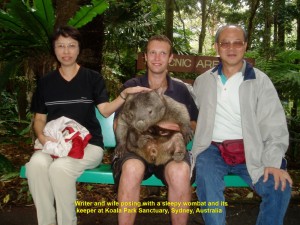
Writer and wife posing with a sleepy wombat and its keeper at Koala Park Santuary, Sydney, NSW, Australia
Kangaroos
When we entered a fenced-up area, we saw some tourists feeding kangaroos. They were quite tame as they did not mind tourists getting close to them. There was a big and beautiful peacock in the area. It often spread its long colourful and shiny feathered tail to show off its beauty.
Sheep Shearing
Later we walked to a place where a fat, dirty-looking man with a cowboy hat showed us how a sheep was sheared. After shearing half-way, he asked a tourist to continue shearing the sheep for him. As the novice could not hold the sheep properly, the whole audience had a good laugh.
Boomerang Throwing & Sheep Dog
After the shearing demonstration, the man went to an open space and showed us his boomerang throwing skill. Then he commanded his intelligent black and white dog to show us how it rounded up a few sheep in the fenced up area. In another fenced-up area we were fortunate to see some big emus co-existing with the sheep.
Day 5: Tuesday 16 Nov 2004
Travel to Blue Mountains National Parks
We left Sydney city in the morning and travelled westwards to the well-known Blue Mountains National Park.
It is a World Heritage Region. On the way, we stopped at Katoomba to have lunch at a Chinese restaurant, Canton Palace Restaurant. After lunch, we continued our journey.
Scenic World
Soon we reached a tourist spot known as Scenic World in the Blue Mountains. Then we took a ride on the Scenic Railway which is the steepest in the world. It goes down 200m to Jamison Valley. In the valley, we strolled through lush fern filled rainforest and came across an old coal mine area where there was a statue of a coal-miner and his horse-drawn cart. We also saw some rusty buckets lying on a slope. They were once used for carrying coal across the valley. One day they fell onto the slope because the cable holding them snapped.
To go up a hill, we boarded Scenisender which is a big carriage carrying about 70 people at a time. It has transparent walls and roof so that the passengers can see the breathtaking panoramic views of the blue mountains, valleys and waterfalls.
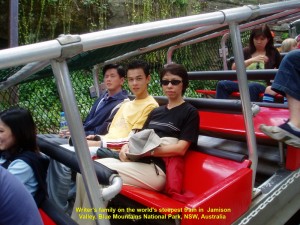
Writer’s wife and children riding the world’s steepest train in Jamison Valley, Blue Mountains National Park, NSW, Australia
Echo Point and The Three Sisters
Later we went to a vantage point, Echo Point, to look at a unique rock formation which looks like three human figures. According to the aborigines’ legend, there were three sisters who were turned into rocks by their father as he was running away from a powerful evil spirit. Later, he could not change them back to human beings as he had lost his magic wand. So the three figures is now known as “The Three Sisters”.
The views from Echo Point are spectacular. You can see rugged tablelands, sheer cliffs and deep valleys. The whole region, covered with rich green flora, is engulfed in a blue haze caused by the oil from the Eucalyptus trees.
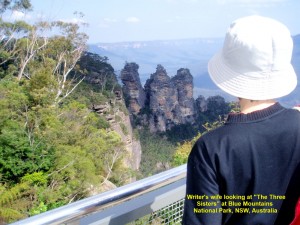
Writer’s wife looking at “The Three Sisters” from the Echo Point, Blue Mountains National Park, NSW, Australia
Later we went a souvenir shop where I saw a statue of an aboriginal man with a traditional musical instrument known as didgeridoo.
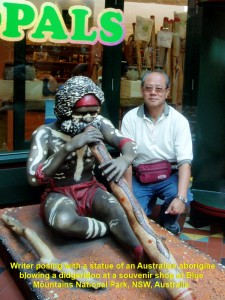
Writer posing with a statue of an aborigine with a didgeridoo at a souvenir shop, Blue Mountains National Park, NSW
Sydney Olympic Stadium
Travelling back to Sydney, we stopped at Australia’s largest stadium. It was in this stadium that the Olympics was held in year 2000. We were fascinated by many pillars erected outside the stadium. These pillars carry hundreds of Olympic gold-medalists’ names inscribed on them. I tried to look for some Malaysians’ names on them but, unfortunately, I did not find any.
Looking at the huge stadium outside, I started to imagine that I heard thousands of spectators cheering at the athletes who were running on the track inside. Having finished the race first, the winner jumped up for joy and happily threw kisses to the cheering crowds. Before I could go on imagining, we were asked to return to the coach to continue our journey back to Sydney City.
Day 6 : Wednesday 17 Nov 2004
Queen Victoria Building (Sydney)
Queen Victoria Building
After breakfast in Sydney, my wife, son, my wife’s Australian friend and I walked to a well-known shopping quaint building, Queen Victoria Building, in George Street.
While walking to the shopping building or mall, I noticed three wise monkey figures at a pub entrance. The first monkey was closing its mouth, the second closing its eyes and the last one closing its ears. They sent a message that they “speak no evil, see no evil and hear no evil”.
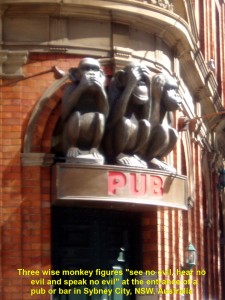
“Three Wise Monkeys” speak no evil, see no evil and hear no evil at the entrance of a pub in Sydney City
In the Queen Victoria Building, there are 5 levels of shops which offer branded fashionable clothes, food, arts, jewellery, antiques, gifts and souvenirs.
In the middle of the building stood a very tall Christmas tree which was beautifully decorated. It reminded the locals of the Christmas shopping season.
There is a large clock tower in the building with 4 paintings and sculptures depicting the life of the Australian aborigines before the white settlement, the Captain Cook’s landing in Australia in 1770, the second fleet of English convicts landing in 1790, and the taking of the children of the aborigines by government and missions for child protection to prevent their extinction in the period 1909-1969.
Sitting on a throne on a tall white pedestal outside the building is a bronze statue of Queen Victoria of England.
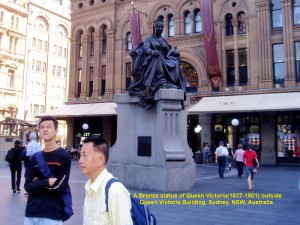
A bronze statue of Queen Victoria(1837-1901) outside Queen Victoria Building, Sydney, NSW, Australia
Paddy’s Market
Later, we walked to the Sydney’s largest and famous market, Paddy’s, in Hay Street. It has lots of shops selling all kinds of merchandise ranging from souvenirs and apparels to vegetables, fruits and seafood. It was fun to browse in the market. But we did buy something there.
City Monorail Ride
After visiting the busy market, we took a monorail which brought us round for an interesting sightseeing tour of the Sydney’s CBD (Central Business District).
In the evening, we took an early dinner and left for the Sydney airport to catch a flight home. At 11 pm (Sydney local time), our plane took off and we were on our way home (Malaysia).
Day 7 : Thursday 18 Nov 2004
Journey Back To Malaysia
On the way home, I started to recollect the beautiful and interesting places I had visited, the friendly people I had met, native animals in sanctuaries I had watched, historic buildings I had seen, spectacular landscapes of the Blue Mountains, different city skylines, and many more that I had admired in Australia. Furthermore, I remembered the Australian foods and wine I had tasted, the air at different places I had smelt, the boat cruise I had enjoyed, and many other unforgettable experiences.
A Long Flight Risk
As it was a long journey home, I got up and walked up and down the aisle in the plane several times. That was to avoid the risk of developing dangerous blood clots in my legs. These blood clots may cause death if they block lungs, brains, or other vital organs.
Well, that is a diary of our Australia travel. Thank you for reading it and hope you have enjoyed it.
Written by: Choo Chaw, Kluang, Johor
Australia Travel (Part I)
Australia Travel Part I
After enjoying a tour of six countries in Europe in June 2004, my wife and I were bitten by the travelling bug again. This time we decided to travel to two Australian cities, Melbourne and Sydney, for another exciting sightseeing tour. For this travel, we got our two sons to come along with us to enjoy the travelling experience together.
Below is the itinerary of our Australia travel:
Day 1 Air Travel to Australia
Day 2 Melbourne Aquarium
Melbourne City Tour 1
Melbourne City Tour 2
Day 3 Mornington Peninsula
Phillip Island
Day 4 Sydney City Tour 1
Sydney City Tour 2
Day 5 Sydney Koala Park Sanctuary
Blue Mountains
Day 6 Queen Victoria Building
Day 7 Journey Home (Malaysia)
(by Choo Chaw, Kluang, Johor, Malaysia)
Day 1: Friday 12 Nov 2004 Air Travel To Australia
On 12 Nov 2004, we joined a group of 20 Malaysian tourists at Kuala Lumpur International Airport (KLIA). In the evening we boarded an airplane, Boeing 737.
Boeing 747 of Qantas Soon we were flying in the air and not long we landed at Changi International Airport in Singapore where we boarded another airplane, Boeing 747. When I entered the airplane, I was amazed to see the plane bigger than the earlier one we had taken. It was wider. Besides, it had many rows of seats and a staircase leading to another floor. Out of curiosity, I explored the plane inside and quietly told myself that airplane builders were fantastic. Besides its own weight, the plane could carry more than 300 passengers!
Soon, in the evening, we were flying again and continued our long journey to Australia.
Day 2: Saturday 13 Nov 2004 Melbourne Aquarium
After travelling in the air for 8 hours, we finally arrived at Melbourne airport in the morning. Then we were whisked away by a coach to the Melbourne Aquarium located on the corner off Queensland Road and King Street, and near Yarra River. The river at that moment was swollen as it had rained heavily in the interior.
The aquarium shows more than 10,000 marine creatures ranging from tiny jelly fish to huge sting-rays and white sharks. Besides, it carries out a shark conservation project.
When we came out of the aquarium, we were fascinated by a small, yellow car which was completely filled with water and tiny, colourful fish were seen swimming inside. Then we headed to the city for a sightseeing tour.
Melbourne City
Melbourne is the 2nd. largest city in Australia. It has a population of 3.4 million who are mostly Europeans.
Among the interesting places we visited were as follows:
Parliament House of Victoria in Spring Street
It was built in 1856 and became the seat of Federal Parliament until 1927 when Canberra became the official capital of Australia. Then it was taken over by the Victoria State Parliament.
Windsor Hotel
It is one of the oldest hotels in Melbourne. It is a grand old hotel of four storeys and built in Victorian architectural style.
Adam Lindsay Gordon
In the city, there is a beautiful fountain which was built by a convict. In front of the fountain is a statue of a famous Australian poet, Adam Lindsay Gordon (1833-1870). Famous lines in one of his poems are:
“Question not, but live and labour
Till yon goal be won,
Helping every feeble neighbour,
Life is mostly froth and bubble,
Two things stand like stone,
KINDNESS in another’s trouble,
COURAGE in your own.”
St. Patrick’s Cathedral
It is located in Cnr. Grisborne Street. It was officially opened in 1858 and is regarded as the finest ecclesiastical building in Australia. It is built in Gothic architectural style and its main spire is 105 metres high. It is large with a seating capacity of 1,800 – 2,000.
Fitzroy Garden
It is near St. Patrick’s Cathedral. It is a magnificent garden which has both big native trees like Bunya Bunya Pine, Flame Tree, Spotted Gum, Moreton Bay Fig, and exotic trees like Cape Chestnut, Tulip Tree, Linden, English Elm and Maidenhair Tree. Attractive statues can be seen in the garden, such as Boy on the Turtle, Boy and Pelican, Diana and the Hounds, Mermaid and Fish, and Statue of Meditation.
Besides, there is a beautiful beige-coloured building built in the Spanish mission architectural style, the Conservatory. It is a tourist favourite attraction as it has a spectacular myriad of floral displays, e.g. colourful flowers of schizanthus, calceolaria hydrangea, fuchsia, tuberous begonia and gloxinia.
Captain Cook’s Cottage
It is in Fitzroy Garden. It is a small two-storey building made of sandstone and bricks surrounded by a garden of 18th. Century character. Originally, the cottage was built in Yorkshire, England and in 1755 Captain James Cook’s father bought it. Captain Cook had stayed in it during his boyhood days. In 1933, a prominent Melbournian, Russel Grumwide, bought it as a gift to the people of Victoria. It was dismantled in England and transported to Fitzroy Garden in Melbourne where it was reassembled in 1934.
Sinclair’s Cottage
It is a small, old brick-house in Fitzroy Garden. It was built in 1864 and is on the main walkway. James Sinclair who was a well-known plant artist had lived in the cottage. He had worked for the Parks Lands Committee of Fitzroy Square and introduced many kinds of plants in the garden. He died at the age of 72 in 1881 in his cottage.
Shrine of Remembrance and War Memorial
They are sited near St. Patrick’s Cathedral. The former is modelled on the ancient Greek Parthenon and was completed in 1934 to honour the 114,000 Victorians who had served in WW 1, of whom 19,000 died.
At the end of WW II, more than 250,000 Melbournians attended the ceremony to commemorate the ending of WW II. The War Memorial was built in memory of the fallen Australian heroes in World World II.
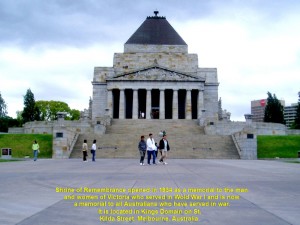
Shrine of Remembrance opened in 1934 to memorial of men and women of Victoria who served in WWW I, Melbourne, Victoria, Australia
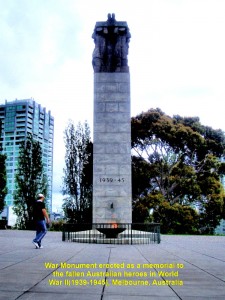
War Memorial erected to memorial of fallen Australian heroes in WWW II(1939-1945), Melbourne, Victoria, Australia
Chinatown
It is a bustling, colourful area. It has a characteristic Chinese arch at its entrance. It is packed with traditionally-run Chinese shops and restaurants in and around Little Bourke Street.
Queen Victoria Market
It is located in Elizabeth Street. It was opened in 1878 and covers an area of 5.5 hectares. It houses hundreds of stalls which offer goods ranging from souvenirs and clothes to carpets and watches. Besides, fruits, flowers and seafoods are also sold here. Browsing the stalls is a pleasurable and unforgettable experience.
Town Hall
It is in Swanston Street. It was built in 1870 and its tall tower holds a big clock which is still working. Decisions concerning the city’s development are made here. It is also an important hub for the city’s cultural and civic activities. In addition, it plays host to theatrical performances, weddings, receptions and exhibitions.
Southgate Plaza
After the city tour, we checked in at a hotel. In the evening, we went to Southgate Plaza along River Yarra which is a popular spot for tourists and locals alike. It has a casino (Crown Casino), fine restaurants, bars, shopping cehtres and many more.
We entered the casino to watch some tourists and locals trying their luck in all kinds of gambling, from one-armed bandits to black-Jack. But I did not play any, as I was travelling on a shoe-string budget.
When we came out of the casino, we were shocked to hear a loud explosion followed by a large burst of flame lighting up the surrounding. Then more explosions followed. At first we thought terrorism had struck Australia but later, we realized that they were meant to attract tourists and locals to the area.
Day 3 : Sunday 14 Nov 2004 Mornington Peninsula
In the morning, we travelled to Mornington Peninsula. This picturesque peninsula is often known as “Melbourne’s Playground”. As we were travelling on the peninsula, we saw rolling hills, bushlands, orchards and farms. We could even see beaches in the distance. It was no doubt a good place for recreation and relaxation for city-dwellers who want to be away for a while from the hustle and bustle of their city.
Nedlands
Our first stop on the peninsula was Nedlands. It sits high atop a hill in Tuerong overlooking Moorooduc Valley. The scenery there was spectacular.
Lavender Farms
We visited one of the lavender farms in Nedlands. On arrival at a farm, my wife and I were surprised to meet an old couple who were once our neighbours Malaysia. “It’s a small world,” we told each other. They were also touring Melbourne and Sydney.
Welcoming us to the farm was a friendly middle-aged lady. She brought us to her farm nearby and proudly showed us her neat rows of lavender plants with beautiful purple flowers. She told us about the plants and the uses of aromatic oil extracted from the flowers. Then she brought us to her small, simple laboratory where she showed us how fragrant lavender oil was obtained by distillation using a simple machine she created.
Thanking the lady, we went to a small seaside town, Rhye, where we had lunch. After lunch, we went to visit the Australia’s largest strawberry producer, Sunny Ridge. At the farm, we were glad to be informed that we had come at the right time for the fruits.
Sunny Ridge Strawberry Farm
After paying a small sum of money to a farm cashier each of us was given a small empty box. We were told to go to the farm nearby, pluck the fresh fruits ourselves and fill up the boxes with them. We were quite excited as it was a new experience for us.
As the farm ground was damp, we put on plastic bags provided by the owner to protect our shoes. Walking carefully between neat rows of strawberry plants we searched for large, red, juicy fruits. As we picked them, we put them in our little boxes. When our boxes were full we continued picking them and ate them. They were fresh and juicy. Later, I was worried that I might get stomach-ache as I have eaten them without washing them. Fortunately, nothing happened to my tummy.
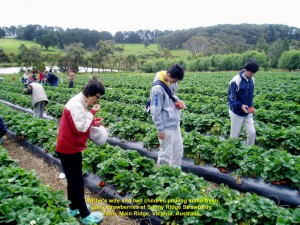
Writer’s wife and two children picking some juicy strawberries at Sunny Ridge Strawberry Farm, Main Ridge, Victoria, Australia
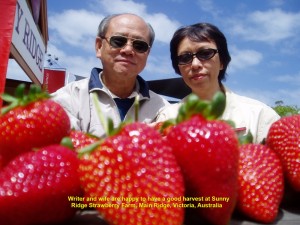
Writer and wife having a good harvest at Sunny Ridge Strawberry Farm, Main Ridge, Victoria, Australia
A Winery
After a visit to the Sunny Ridge strawberry farm we continued our travel to Phillip Island. On the way, we stopped at a winery where we were invited to taste different kinds of wine by the generous winemaker. After tasting the wine, some of us bought a few bottles from her. Outside the winery, we saw neat rows of grape plants which at that time had bunches of bean-sized green fruits.
Rhyll Swamp Bird Sanctuary
To go to Phillip Island, we had to cross a long bridge from San Remo. Arriving on the island, the first place we visited was Rhyll Swamp Bird Sanctuary. At the sanctuary, we saw native birds in aviaries and others in the trees, e.g. kookaburras, parrots and eagles.
Koala Conservation Centre
Next to the bird sanctuary was a koala conservation centre. It has a natural habitat for koalas. To look for the koalas in the trees, we had to walk on raised wooden platforms. It was not difficult to find them. When we found them, we were excited and took some photos of them. Then we left Phillip Island and stopped at a Chinese restaurant at San Remo for dinner. On arrival, we were surprised to see it fully packed with tourists who were mostly Asians. So we waited patiently for an hour before we could enter and have our dinner.
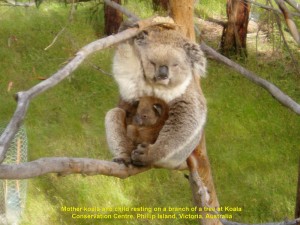
A mother koala and baby resting on a branch at Koala Conservation Centre, Phillip Island, Victoria, Australia
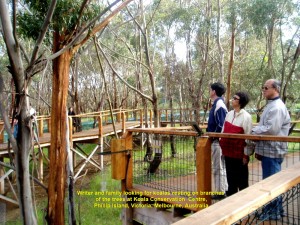
Writer and family looking for koalas in the trees at Koala Conservation Centre, Phillip Island, Victoria, Australia
The Penguin Parade
After dinner, we went back to Phillip Island. When we arrived at Summerland Beach it was getting dark and cold wind was blowing from the sea. The we were awe-struck to see hundreds and thousands of the world’s smallest penguins returning home from fishing in the seas of Bass Strait. They were marching up the beach in groups to their nesting places in the sand dunes. The sight of the penguin parade was spectacular. If they could not find their homes they would try to enter other penguins’ burrows but usually they were chased out noisily by the owners.
I was quite amused by these cute, little creatures which were as big as a duck walking upright like a gentleman in a black and white tuxedos. They would stop walking occasionally to catch their breath before continuing their long walk home.
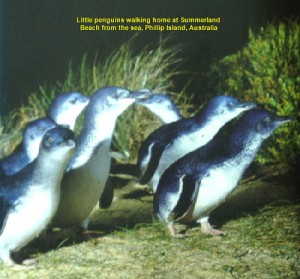
Little penguins returning from the sea and going back to their nests at Summerland Beach, Phillip Island, Victoria, Australia
After watching the amazing penguin parade, we travelled back to our hotel in Melbourne. It took us several hours to reach the city as it is 120 km from Phillip Island.
(Continued in Australia Travel II)

